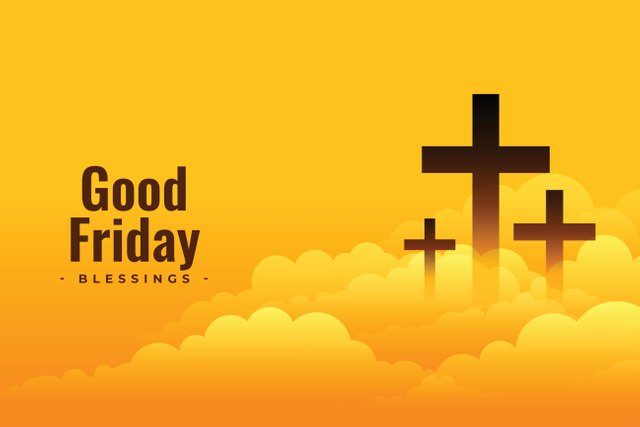Good Friday: Understanding the Significance and Traditions

Good Friday, observed by millions around the world, is a solemn and significant day in the Christian calendar. Good Friday is annually observed between March 20 and April 23. This year , it falls on March 29(Friday). It commemorates the crucifixion of Jesus Christ and his death at Calvary, which Christians believe paved the way for the redemption of humanity. Let's delve into the significance of Good Friday, its traditions, and its universal message of sacrifice and hope.
- The Significance of Good Friday:
Good Friday holds immense significance in Christianity as it marks the climax of the Passion of Christ. According to the New Testament, Jesus willingly suffered and died on the cross to atone for the sins of humanity, offering salvation to all who believe in him. It symbolizes the ultimate sacrifice made out of love and compassion.
- Observances and Traditions:
a. Church Services: Many Christians attend church services on Good Friday, where somber rituals and readings are conducted, reflecting on the events leading to Jesus' crucifixion. Churches often hold solemn liturgies, including the Stations of the Cross, which depict Jesus' journey to Golgotha.
b. Fasting and Abstinence: Some Christian denominations observe fasting and abstinence on Good Friday as a form of penance and reflection. This practice symbolizes solidarity with Jesus' suffering and is a way to focus on spiritual contemplation.
c. Prayer and Meditation: Good Friday is a time for prayer and meditation, with believers reflecting on Jesus' sacrifice and the profound implications it holds for their faith. It's a day of introspection and gratitude for the redemption offered through Christ's death.
d. Processions and Dramatizations: In various parts of the world, processions and dramatizations depicting the Passion of Christ are held on Good Friday. These reenactments serve as a visual representation of the events leading to the crucifixion, fostering a deeper connection to the biblical narrative.
- Symbols of Good Friday:
a. The Cross: The cross is the central symbol of Good Friday, representing Jesus' crucifixion and the salvation it brings. It serves as a potent reminder of God's love and the hope found in Christ's sacrifice.
b. Crown of Thorns: The crown of thorns, placed on Jesus' head before his crucifixion, symbolizes the suffering and mockery he endured during his final hours.
c. Crucifix: A crucifix, depicting Jesus on the cross, is often displayed in churches and homes as a symbol of faith and redemption.
- Universal Message of Good Friday:
Good Friday transcends religious boundaries, carrying a universal message of sacrifice, compassion, and redemption. It serves as a poignant reminder of the power of love and the capacity for forgiveness, inspiring individuals of all faiths to reflect on the importance of selflessness and empathy.
Conclusion:
Good Friday is a solemn yet profoundly meaningful day for Christians worldwide. It invites believers to contemplate the depth of Jesus' sacrifice and the transformative power of redemption. As people gather in prayer, meditation, and reflection, Good Friday serves as a poignant reminder of the enduring message of hope and salvation found in the crucifixion and resurrection of Jesus Christ.